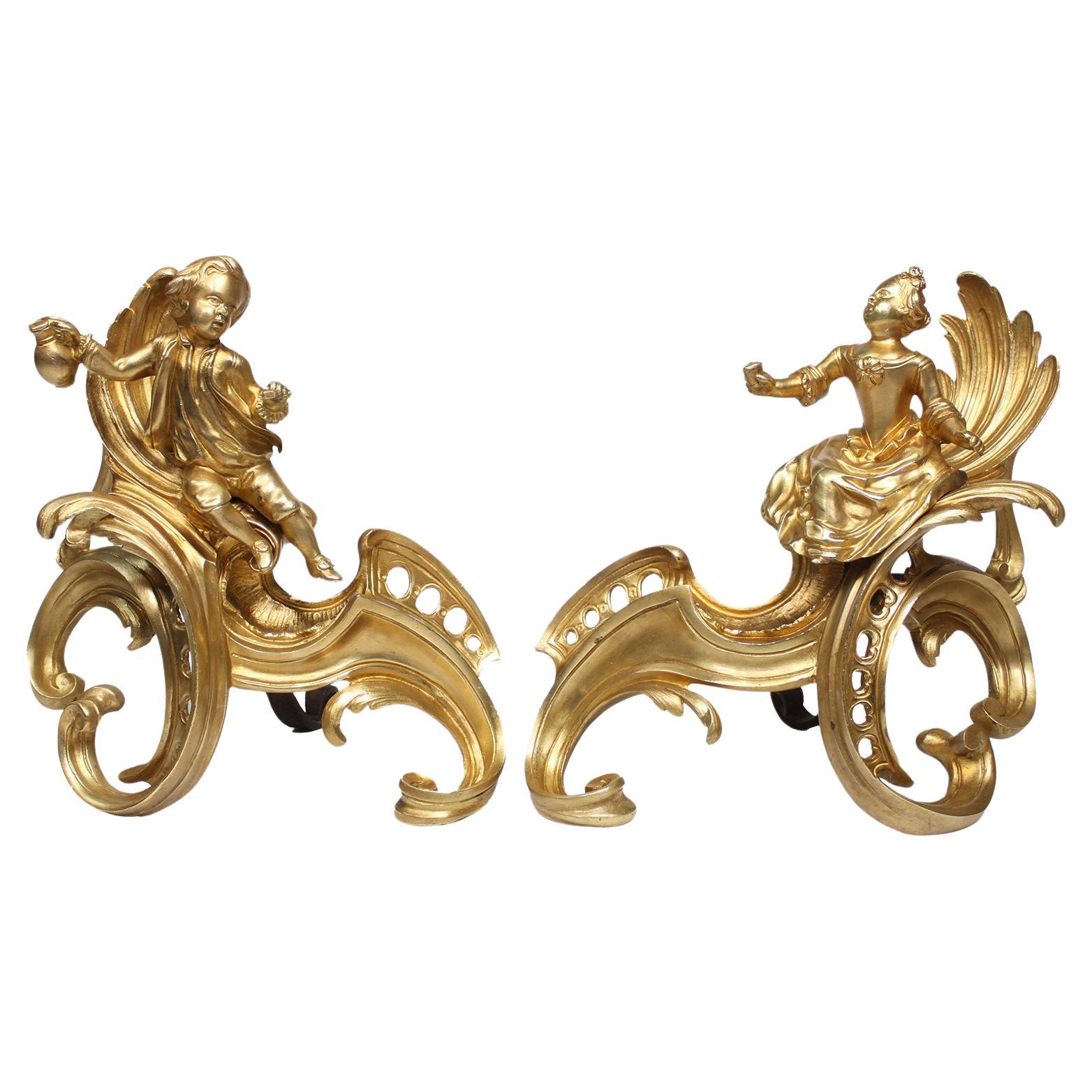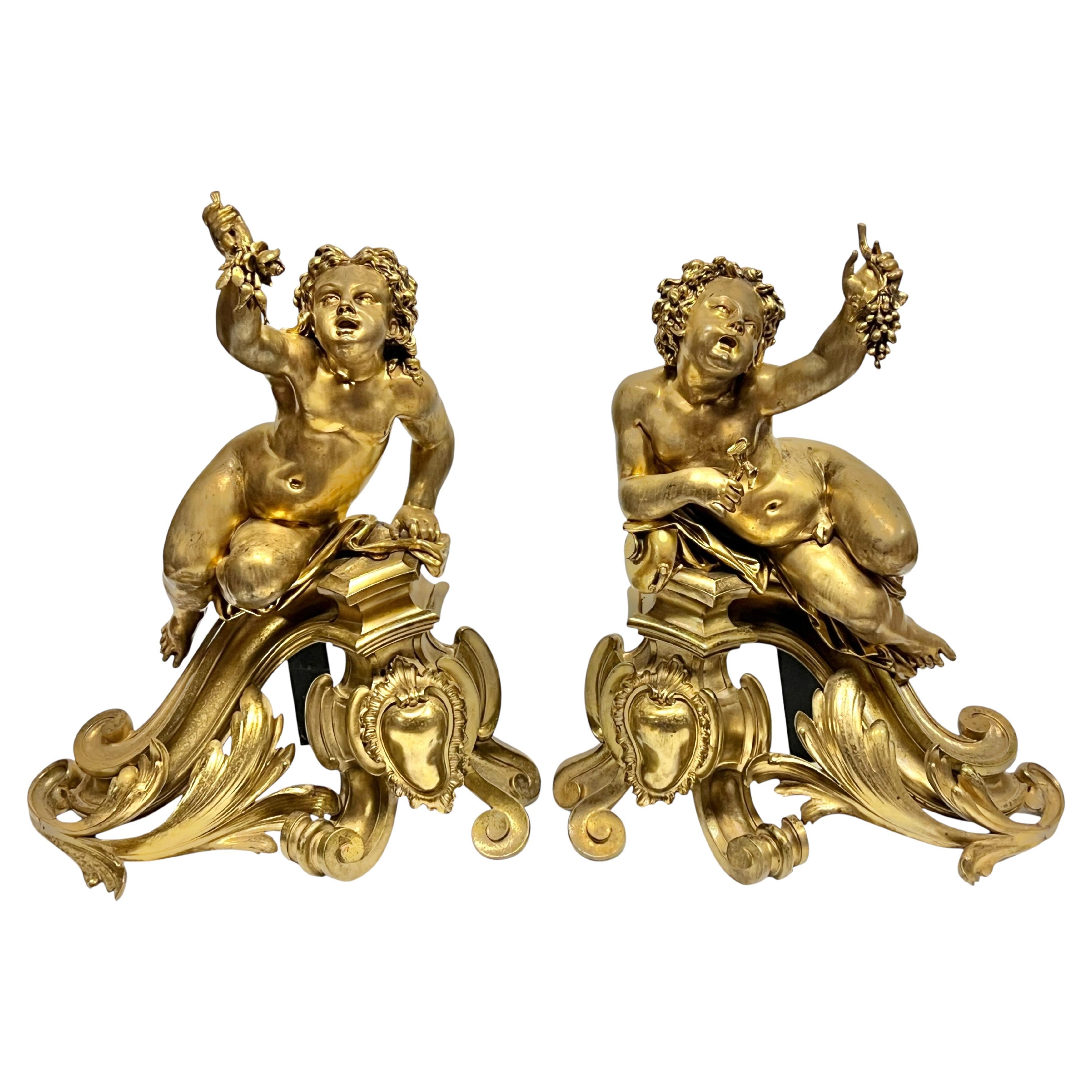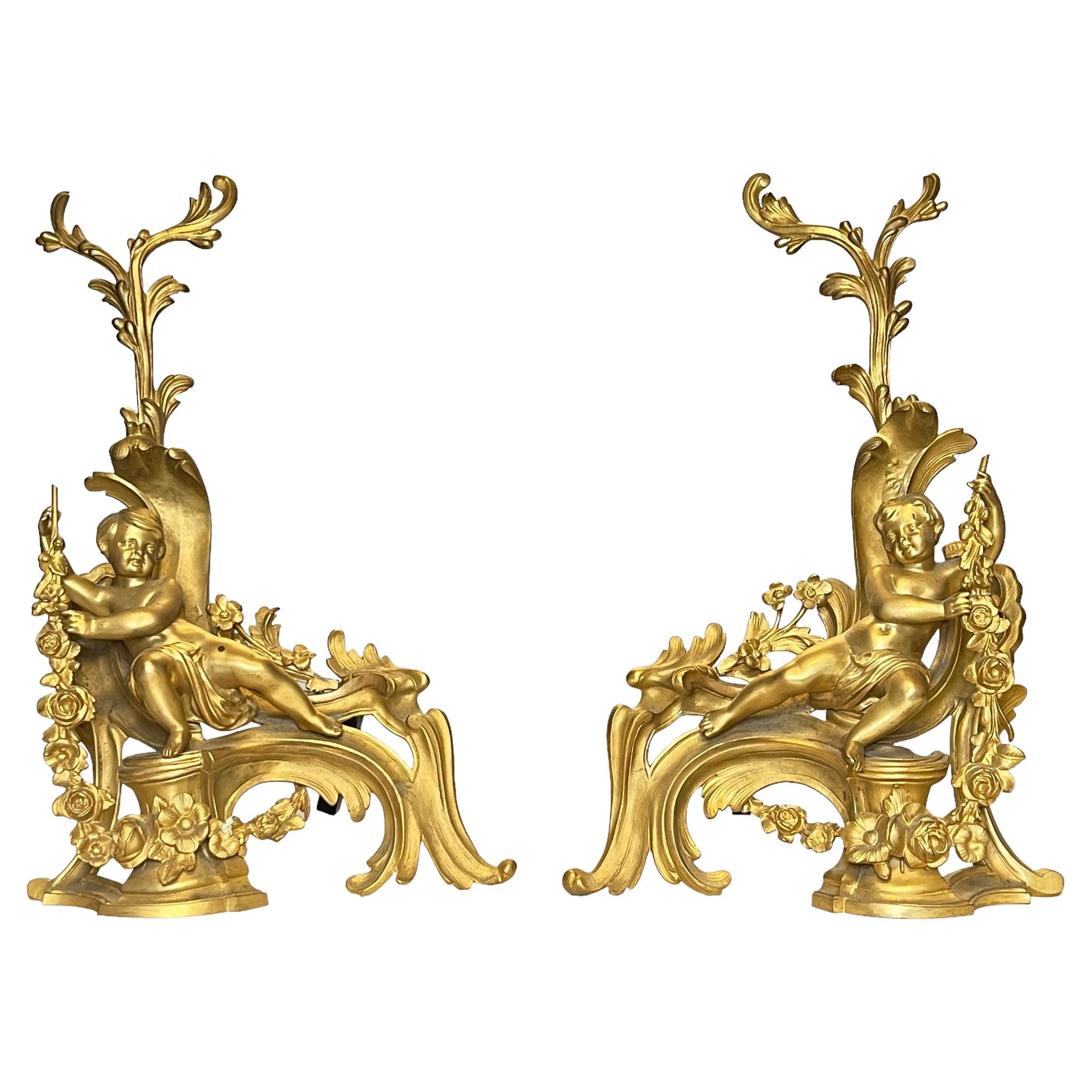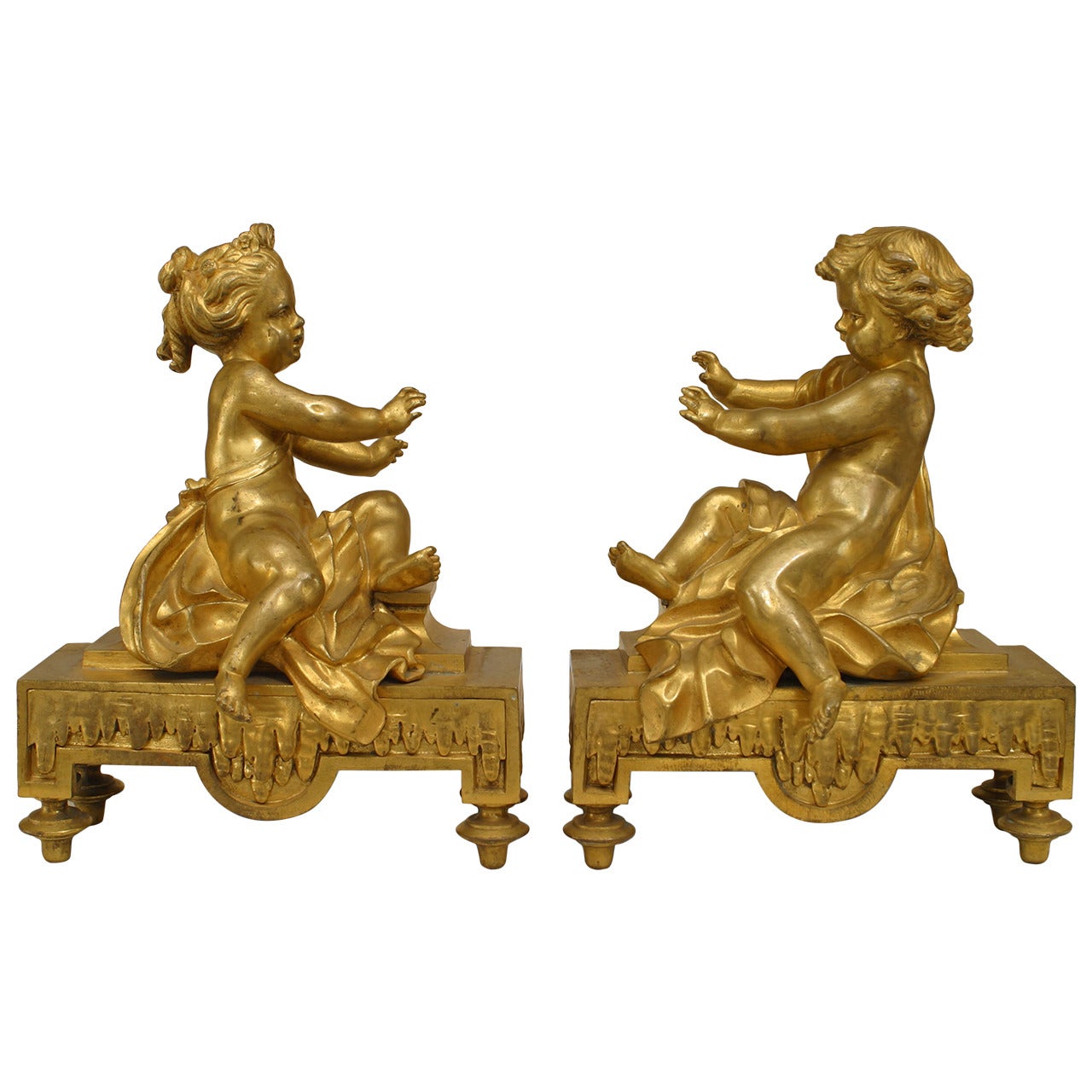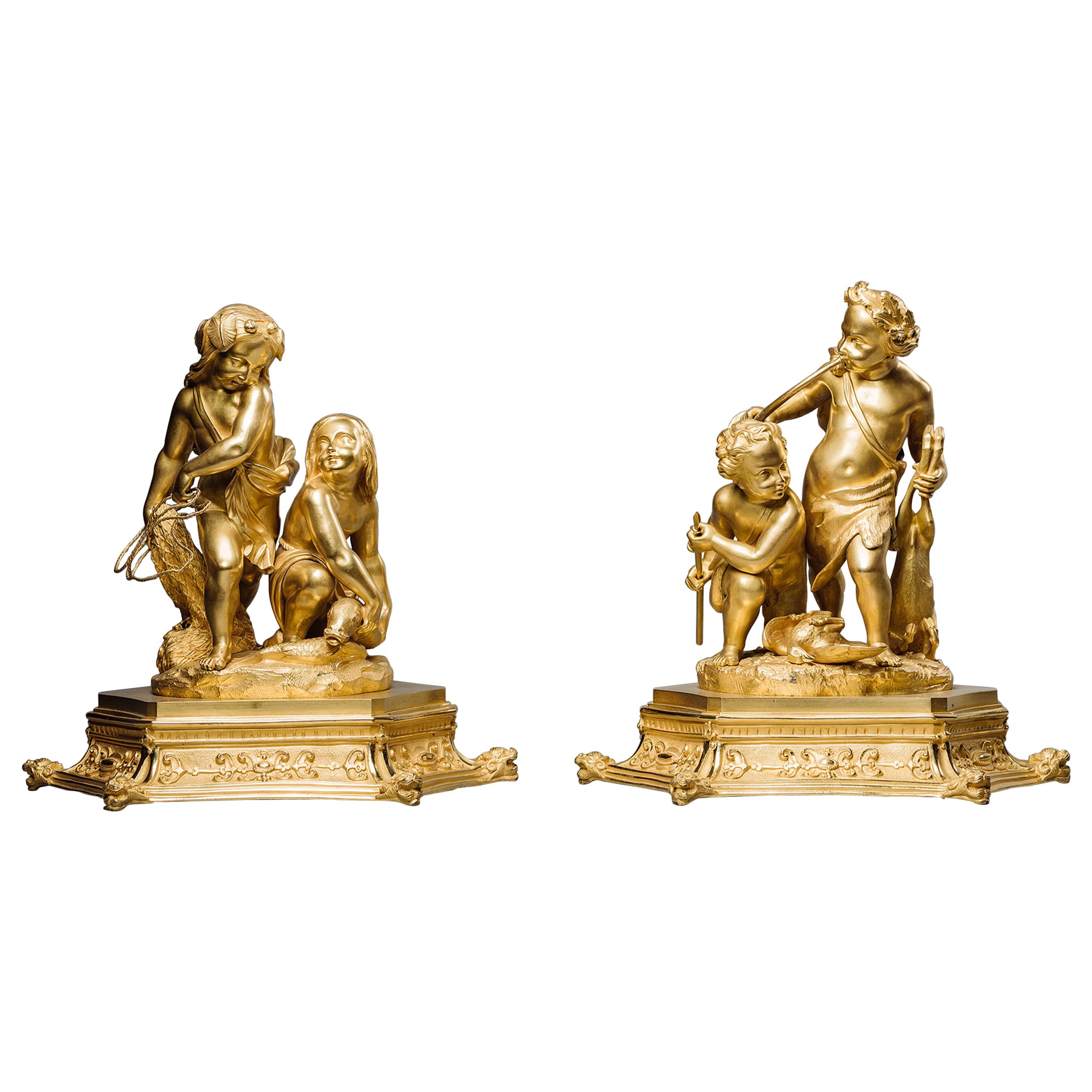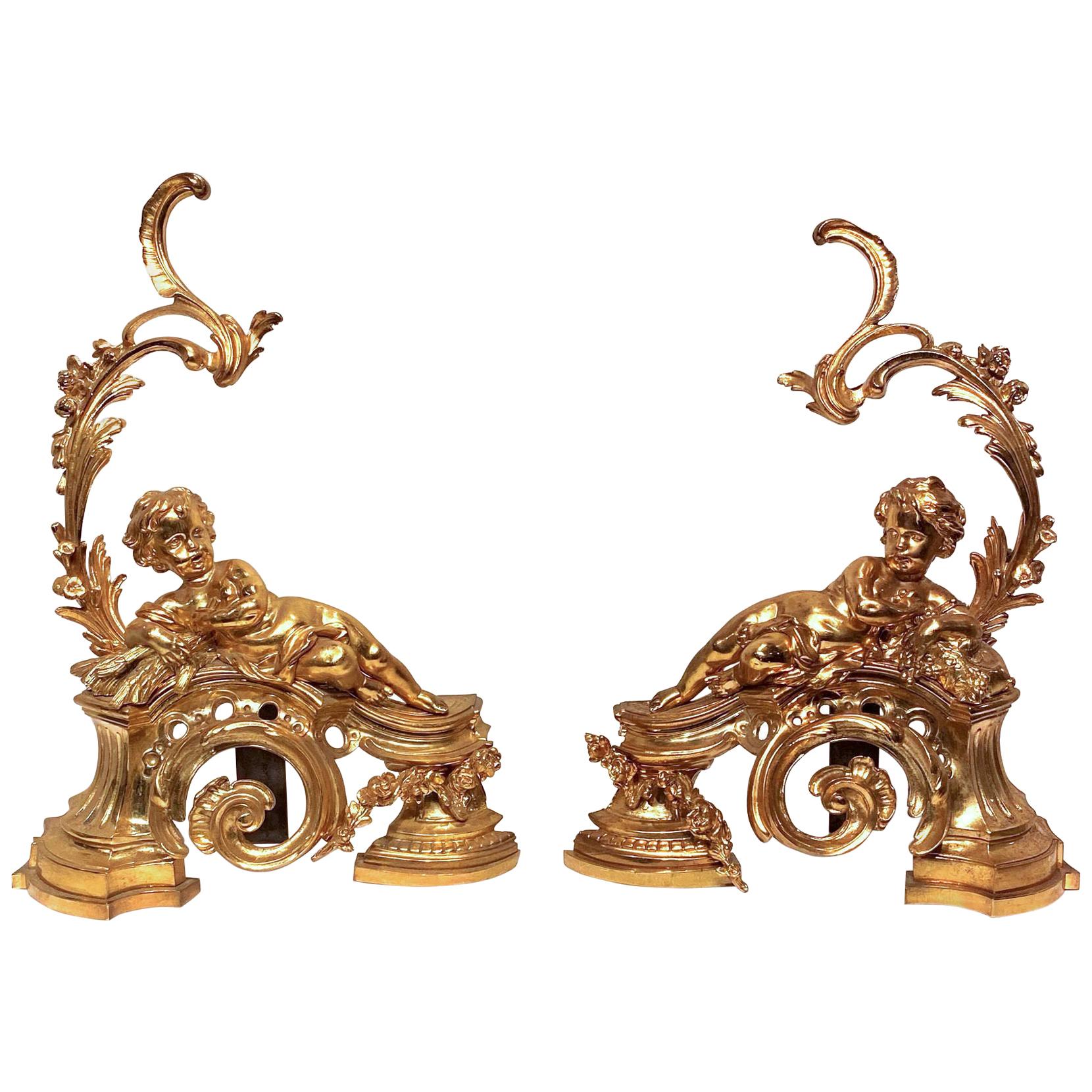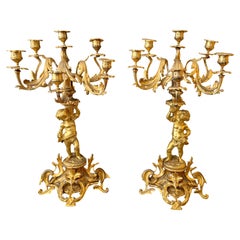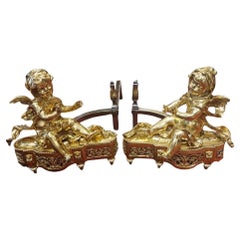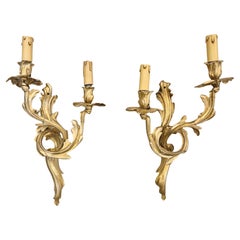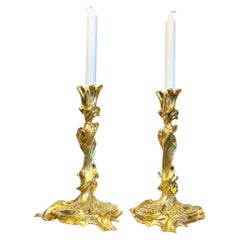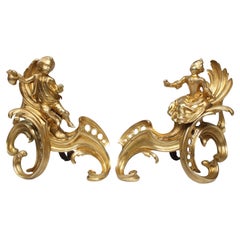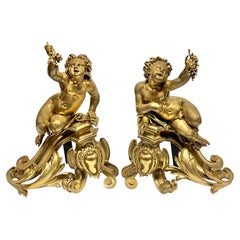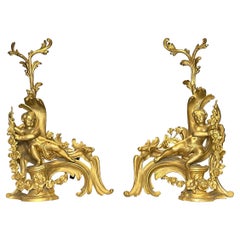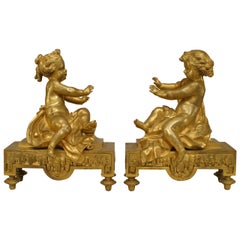Items Similar to Pair of gilt bronze sculptures of Cupidon and Psyché, 19th century
Want more images or videos?
Request additional images or videos from the seller
1 of 18
Pair of gilt bronze sculptures of Cupidon and Psyché, 19th century
$11,348.82
£8,468.10
€9,600
CA$15,790.45
A$17,669.89
CHF 9,192.07
MX$212,908.61
NOK 115,723.91
SEK 109,339.83
DKK 73,092.08
About the Item
Pair of Napoleon III period gilt bronze andirons, 19th century, depicting Cupid and Psyche on acanthus leaf bases.
High-quality gilding with matte and glossy finishes.
Ideal for decorating a mantelpiece, chest of drawers or bookcase.
Other models can be viewed on our site.
About the Seller
5.0
Vetted Professional Seller
Every seller passes strict standards for authenticity and reliability
Established in 2003
1stDibs seller since 2023
32 sales on 1stDibs
Typical response time: 2 hours
- ShippingRetrieving quote...Shipping from: NICE, France
- Return Policy
Authenticity Guarantee
In the unlikely event there’s an issue with an item’s authenticity, contact us within 1 year for a full refund. DetailsMoney-Back Guarantee
If your item is not as described, is damaged in transit, or does not arrive, contact us within 7 days for a full refund. Details24-Hour Cancellation
You have a 24-hour grace period in which to reconsider your purchase, with no questions asked.Vetted Professional Sellers
Our world-class sellers must adhere to strict standards for service and quality, maintaining the integrity of our listings.Price-Match Guarantee
If you find that a seller listed the same item for a lower price elsewhere, we’ll match it.Trusted Global Delivery
Our best-in-class carrier network provides specialized shipping options worldwide, including custom delivery.More From This Seller
View AllPair of French Louis XV Style Bronze Dore Cupid Candelabras, 19th Century
Located in NICE, FR
Elegant and sumptuous, this 19th-century pair of candelabras perfectly embodies the refinement of French decorative arts. Crafted in finely chased gilt bronze, these seven-light cand...
Category
Antique 19th Century French Louis XV Candelabras
Materials
Bronze
19th Century Pair of Putti Andirons in Gilt Bronze
Located in NICE, FR
We present you this wonderful pair of 19th-century andirons in gilt bronze. They represent cherubic figures, also known as putti, gazing at each another. These andirons have been met...
Category
Antique 19th Century French Louis XVI Andirons
Materials
Bronze
$3,404 Sale Price
20% Off
Pair of Louis XV style ormolu sconces from the Napoleon III period
Located in NICE, FR
Elegant Louis XV-style ormolu sconces with two arms and acanthus leaf decoration.
These sconces retain their beautiful period matte and burnished gilding. The chasing is of fine qua...
Category
Antique 1880s French Louis XV Wall Lights and Sconces
Materials
Bronze
19th Century Pair of Gilt Bronze Candlesticks after a model by Meissonnier
By Juste-Aurèle Meissonnier
Located in NICE, FR
We present to you this superb pair of gilt bronze candlesticks, dating back to the early 19th century and inspired by a model designed by the renowned French goldsmith, painter, scul...
Category
Antique 19th Century French Louis XIV Candlesticks
Materials
Bronze
19th Century Pair of Candlesticks in Gilt Bronze
Located in NICE, FR
These gorgeous candlesticks are made of gilded bronze in the style of Napoleon III. Their stems are in the shape of figurines of a man and a woman in classical attires. They boast ex...
Category
Antique 19th Century French Napoleon III Candlesticks
Materials
Bronze
$3,511 / set
Pair of Bronze and Gilt Candelabra, France, 19th Century
Located in NICE, FR
This pair of 19th-century French candelabra is made from dark patinated bronze and bright gilt bronze (ormolu). Each piece features a mythical creature, possibly a dragon or a chimer...
Category
Antique Late 19th Century French Napoleon III Candelabras
Materials
Bronze
You May Also Like
Pair of French Early 19th Century Louis XV Style Gilt Bronze Andirons Chenets
Located in Los Angeles, CA
A pair of French Early 19th century Louis XV gilt bronze figural Chenets Andirons. The scrolled and pierced body, each surmounted with a figure of a young boy and a young girl, both ...
Category
Antique Early 19th Century French Louis XV Figurative Sculptures
Materials
Bronze
$2,895 Sale Price
31% Off
Pair French Louis XV Rococo Style Gilt Bronze Putti Figural Andirons / Chenets
Located in New York, NY
Pair of antique (19th century) neoclassical Roman Bacchus themed gilt bronze andirons (chenets) in the French Louis XVI style, depicting seated cherubs holding clusters of grapes. E...
Category
Antique Late 19th Century French Neoclassical Andirons
Materials
Bronze
Pair of 19 Century French Louis XVI Style Gilt Bronze Cherub Motif Figural and
Located in New York, NY
Pair of 19 century French Louis XVI style gilt bronze cherub motif figural andirons / chenets.
Category
Antique Late 19th Century Louis XVI Fireplace Tools and Chimney Pots
Materials
Bronze
Pair of French Gilt Bronze Cupid Andirons
Located in Queens, NY
Pair of French Victorian (19th Century) gilt bronze draped cupid figural andirons (chenets) on base. (PRICED AS Pair)
Category
Antique 19th Century French Louis XV Andirons
Materials
Ormolu
$5,200 / set
Pair of Restoration Period Gilt-Bronze Figural Groups. French, circa 1830
Located in Brighton, West Sussex
An exceptional pair of restoration period gilt-bronze figural groups, allegorical of hunting and fishing.
Each group is set on a naturalistically modelled base and finely modelled...
Category
Antique Early 19th Century French Napoleon III Figurative Sculptures
Materials
Bronze
Pair of Figural Louis XV Style Cherub Motif Ormolu Bronze Andirons
Located in New York, NY
Pair of French 19th century figural cherub motif Louis XV style Ormolu bronze andirons.
Category
Antique Late 19th Century French Louis XV Andirons
Materials
Bronze
More Ways To Browse
Cupid Psyche
Psyche Bronze 19th Century French
Bronze Cupid And Psyche
Commedia Dell Arte
Brass Dancer Sculpture
Goddess Diana
Greek Plaster
Helmet Bronze
Kneeling Nude
Porcelain Bing Grondahl Figurines
Silver Bronze Statue
Sword And Shield
Terracotta Art Nouveau
Angel Angel Statue
Angel Statue
Putti Angels
Cherub Of Love
Wire Head Sculpture
